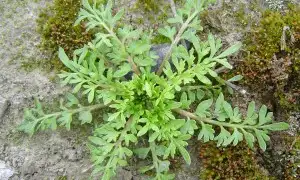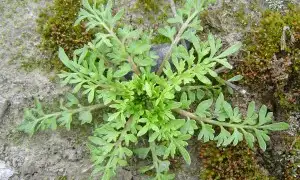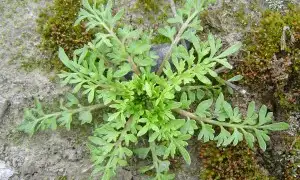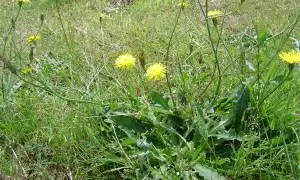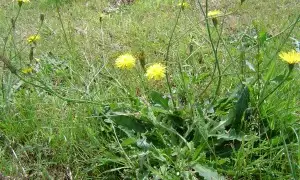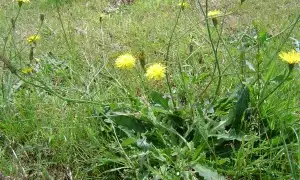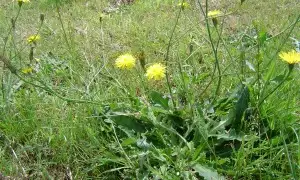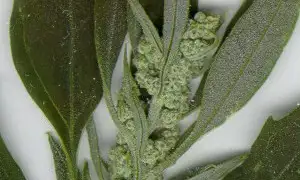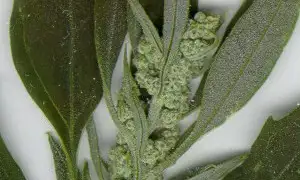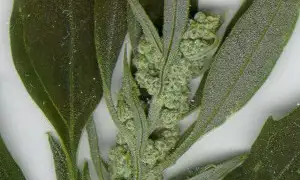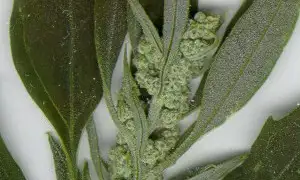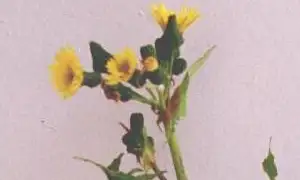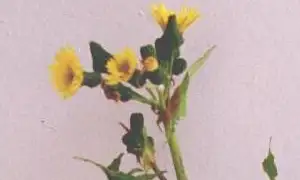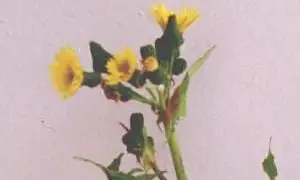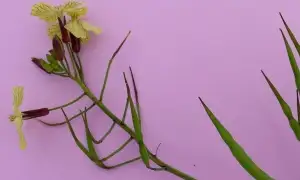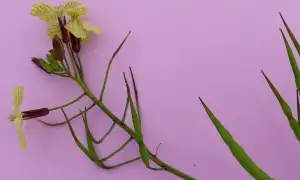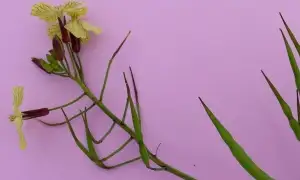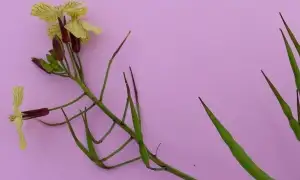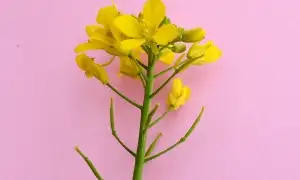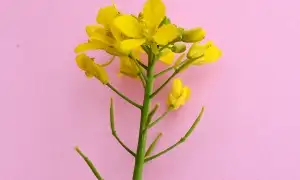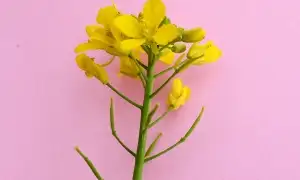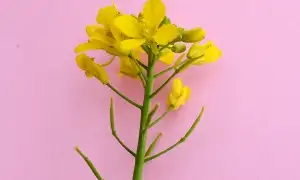Botanical name: Sisymbrium officinale
Family name: Brassicaceae
Overview
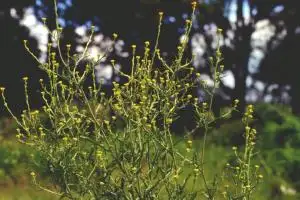
Hedge mustard.
Hedge mustard is an annual weed that can germinate at any time, though normally it germinates either in spring or autumn. It grows as a rosette initially and then forms upright flowering stems that can grow up to one metre or more in height.
It is normally a weed of crops, although is also found in waste places and sometimes in pastures. In some parts of the country, it incorrectly gets called wireweed, which is a completely different weed species.
Apart from problems with competition, hedge mustard can also be a concern in crops such as peas because its tough stem material can clog up harvesters. It is evidently used in Europe in cooking, either in salads or cooked as a pot herb. Herbalists use it to soothe sore throats and sort out bronchitis and stomach ailments, not that we are advocating here for you to do this.
Distinguishing features
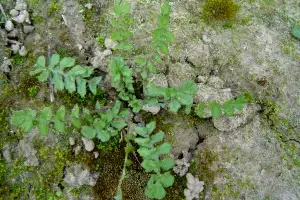
Hedge mustard rosette.
In the rosette stage, Hedge mustard can be confused with many of the other Brassicaceae and Asteraceae weeds which start as rosettes, though it does have quite pronounced lobes.
Plants with look-alike rosettes include sow thistle, Cape weed, wild turnip, wild radish and twin cress. But once it forms its flower stems, there shouldn't be too much confusion.
It has small yellow flowers on the tips of the tall, upright flower stems, and these flowers are smaller than those found in wild turnip. It can also be differentiated from wild turnip and other similar weeds by having pods that grow parallel to the flower stem and so not being very obvious, rather than sticking out as in wild turnip.
Control
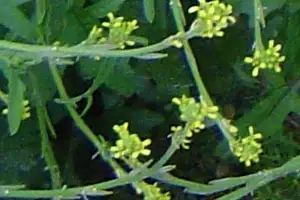
Small yellow flowers that grow on hedge mustard.
Being a member of the Brassica family, it is very difficult to remove selectively from Brassica crops such as turnips and cabbages because it is too closely related to the crops and is therefore resistant to the same herbicides as the crops. This has been partly overcome by the introduction of the Cleancrop Brassica System which uses Brassica cultivars bred to tolerate the herbicide chlorsulfuron (Telar) which will control hedge mustard.
In other situations, it is fairly easily controlled. For example, in pastures herbicides such as MCPB, MCPA, 2,4-D and flumetsulam (Preside) can be used. Most herbicides used in cereals are effective, though not clopyralid (Versatill).
For peas, herbicides such as cyanazine (Bladex) and terbuthylazine (Terbaflo) will be effective, though not trifluralin (Treflan). In pastures, farmers should try to keep pastures dense to prevent new seedlings from establishing.
Similar species
Musky storksbill
Musky storksbill starts life as a rosette, with each leaf made up of a series of leaflets.
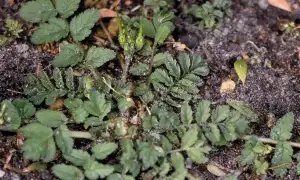

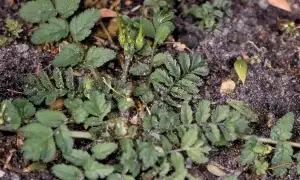
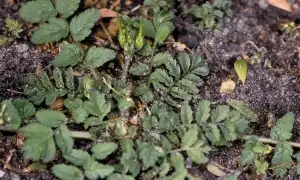
Twin cress
Twin cress is a small weed, starting as a rosette and when mature sends out prostrate stems.
